Artist: Lucas Cranach The Elder
Topic: Fountains
Date: 1546
Size: 122 x 186 cm
Museum: Staatliche Museen zu Berlin (Germany)
Technique: Oil On Panel
Cranach's painting is about the human yearning for immortality and eternal youth. Human beings dream of being young again, of leaving the worn outer shell and exchanging it for a new one. The notion of the cleansing power of the elements, especially of water, is as old as humankind itself. The centre of the scene is a pool filled with water. Some steps lead down to the pool, which is surrounded by a fantastic landscape far from civilisation. People have undertaken arduous journeys to reach this solitary spot and bathe in the miraculous waters. In the left half of the picture wrinkled and frail old women are brought up on carts and stretchers. They are undressed and examined by a doctor before stepping into the water where the gradual process of rejuvenation takes place. Their wrinkles and old sallow skin disappear, their flesh becomes rosy and smooth, and they turn into young girls. As they emerge from the water they are welcomed by a cavalier who shows them to a tent where they receive new clothes. Old peasant women are transformed into young ladies of the court who indulge in the carefree pleasures of life. The jollifications at the festive table, the dancing, music and lovemaking, all take place in a lush flowering landscape. These are the realms of eternal youth, to which the hardships of old age, set in a barren rocky landscape on the left side of the picture, form a stark contrast. The fountain spouting water from the spring into the pool bears the statues of Venus and Cupid - evidence that this is actually a fountain of love rather than youth, and that the power of love is the true source of immortality.
Artist |
|
|---|---|
Download |
|
Permissions |
Free for non commercial use. See below. |
Lucas Cranach The Elder – Most viewed artworks
|
This image (or other media file) is in the public domain because its copyright has expired. However - you may not use this image for commercial purposes and you may not alter the image or remove the watermark. This applies to the United States, Canada, the European Union and those countries with a copyright term of life of the author plus 70 years.
|
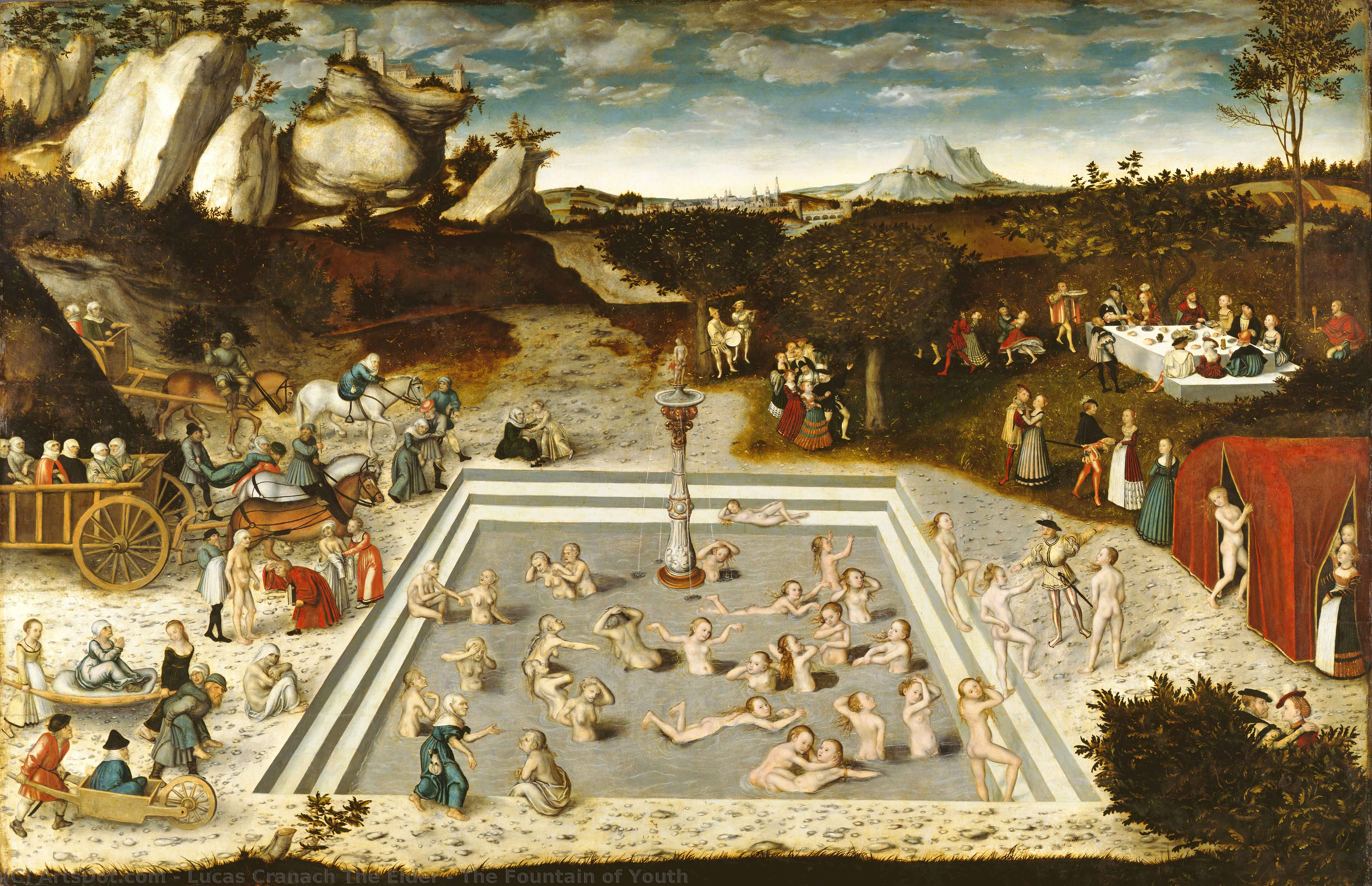
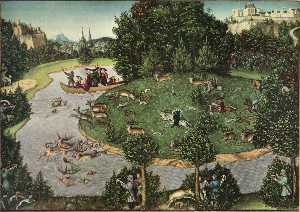

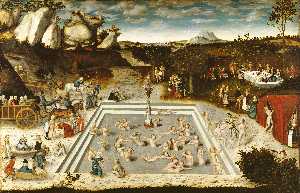

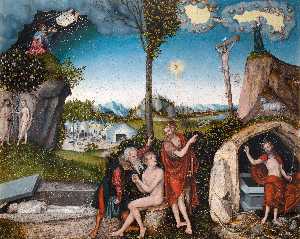








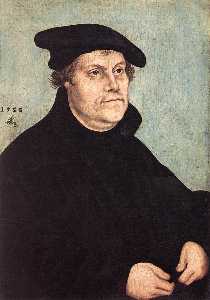
 Note that a few countries have copyright terms longer than 70 years: Mexico has 100 years, Colombia has 80 years, and Guatemala and Samoa have 75 years. This image may
not be in the public domain in these countries, which moreover do not implement the
Note that a few countries have copyright terms longer than 70 years: Mexico has 100 years, Colombia has 80 years, and Guatemala and Samoa have 75 years. This image may
not be in the public domain in these countries, which moreover do not implement the